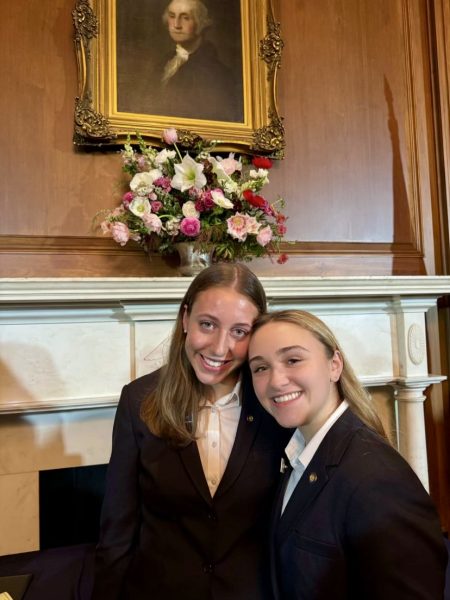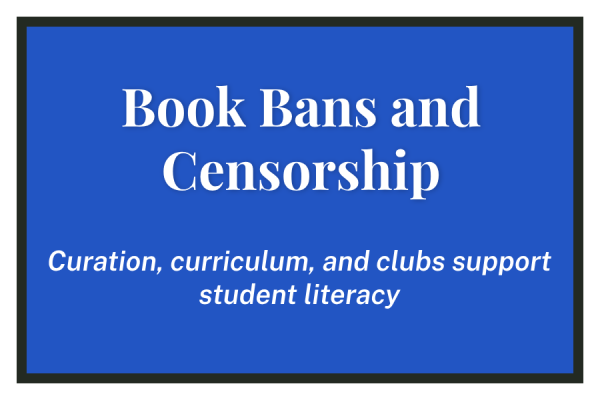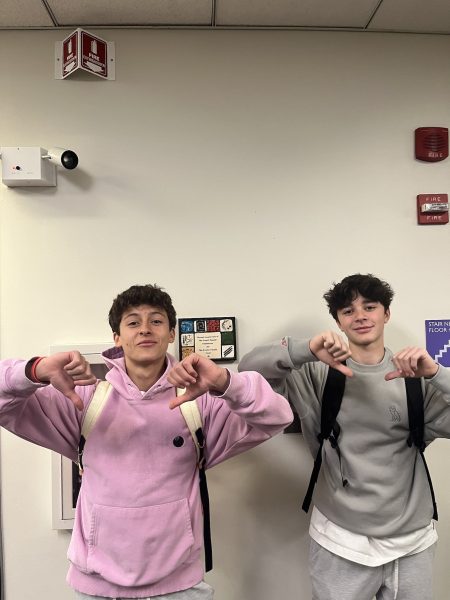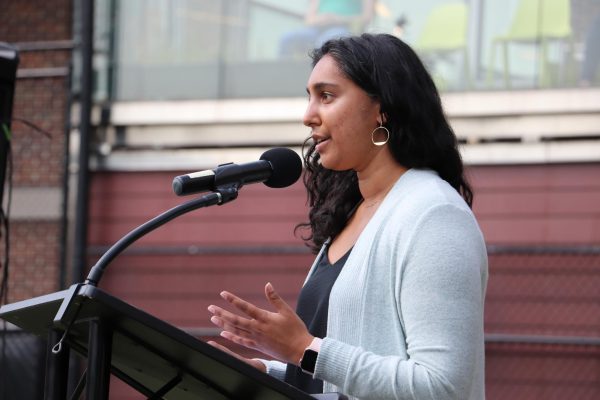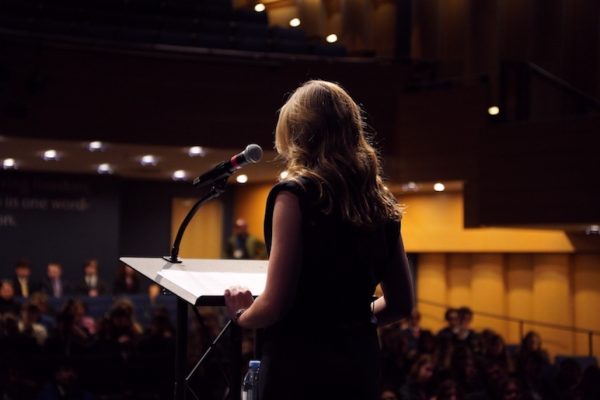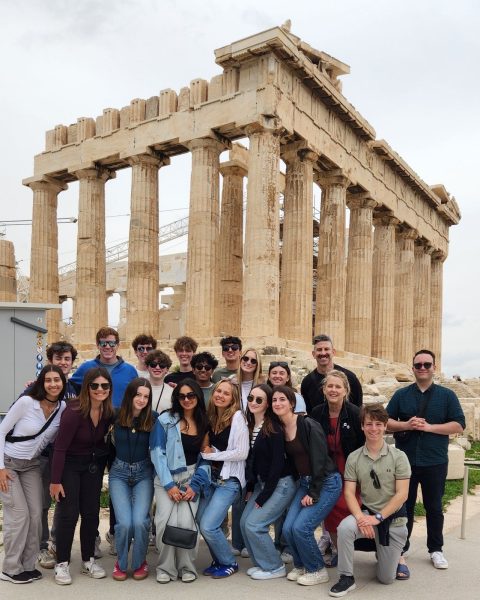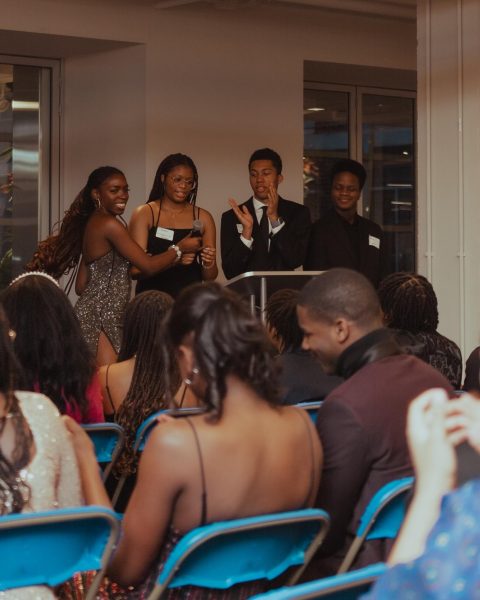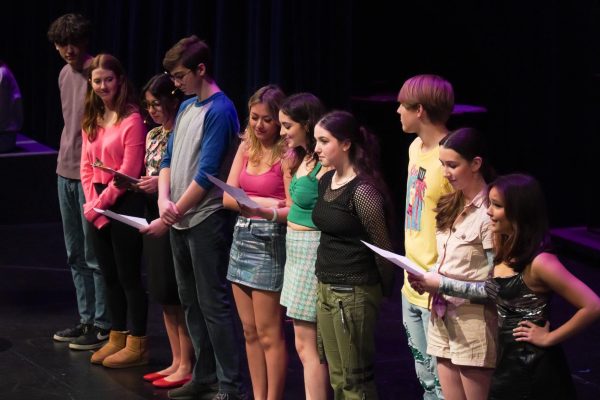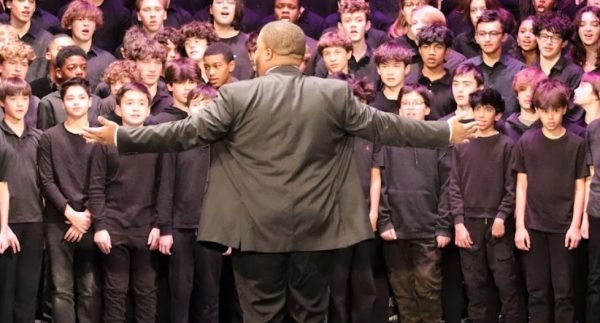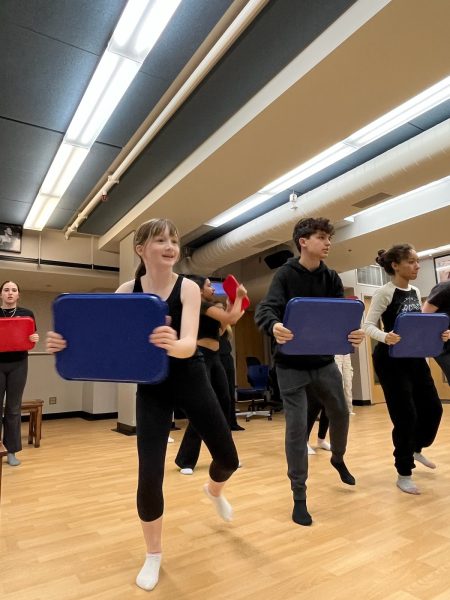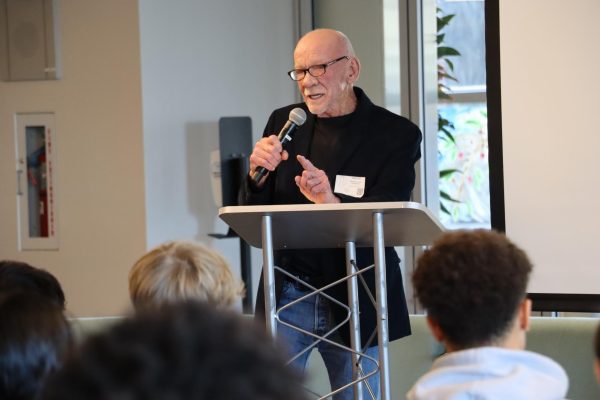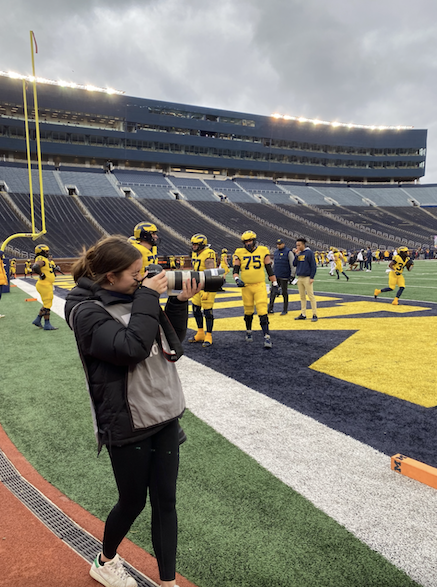Technology Sociology
Celia Rattner’s Independent Study on the Sociology of Social Media
Photo credit: Photo courtesy of Celia Rattner.
The above graph indicates the number of positive posts Rattner tracked throughout her month-long study. Blue represents liberals, and red represents conservatives.
“Can you guess which headline is ‘fake’?”
This is precisely the question junior Celia Rattner at her recent Morning Ex on her independent study titled “The Sociology of Social Media” asked the audience.
Members of the audience suddenly sat up in their chairs, leaned forward, and examined two headlines on the screen: Headline A and Headline B.
Headline A read “A Game of Thrones Fan Traveled To The Arctic As Part Of A Worldwide Scavenger Hunt.”
Some hands rose in the crowd to show their support for the answer.
Headline B read “Girl Chokes On Cockroach In New York City Restaurant.”
Hands flew in the air to answer B in what seemed like an overwhelming majority.
This is just a glimpse of Rattner engaging the audience in her Morning Ex on Friday, May 17th, which covered how influential social media is for both personal and political purposes in the daily lives of people across the world.
Politically, more information is surfacing about how there might have been international interference through misinformation in the 2016 Presidential Election that swayed the vote of many Americans. A lot of misinformation is sent around on social media, and a study from the PEW Research Center shows that 34% of Americans trust the information they get from social media, a statistic that Rattner cited in her presentation.
More and more Americans are falling for fake news headlines that alter their opinions on various topics. Rattner used her Morning Ex as an opportunity to see how many people actually get reeled into fake headlines. “Hopefully by doing that simulation people were able to realize how easy it is for people to believe fake news headlines,” Rattner said.
As a sophomore, Rattner began watching the Netflix original series Black Mirror, a British TV show that examines modern society and the effects technology has on it. The show made her more conscious about her own use of social media and others around her. She noticed how it demanded a curated version of one’s self and how often that resulted in a fake portrayal of a person.
Rattner wanted to find a way to conduct a study on social media’s impact on people’s portrayal of themselves, but struggled initially to find data on that. “I had so many ideas,” Rattner said, “but ultimately elections and social media posting in that regard was easier to collect data on so Ms. Elliott and I came up with that type of study.”
Rattner went to Upper School History teacher Susan Elliott knowing that the topic of social media and its influence had also caught her attention. “As the 2016 election unfolded and more and more people were talking about the influence of social media on the results,” Elliott said, “I, like everyone else, read a lot about it.”
Rattner’s study concluded that positive social media posts towards a given candidate’s campaign were more beneficial to their success, even though negative campaign strategies that bash the opponent are often seen on the news or on social media.
At Parker, the majority of political opinions and political information taught or exposed to students is liberal, according to Rattner. “Because so many teachers at this school have liberal viewpoints and so many families have liberal viewpoints,” Rattner said, “that seems to be the only political ideology that’s thrown around and the only one taught.”
Rattner observed that Parker is an echochamber, meaning people are around others with the same political viewpoint and agree on political ideas. Being in an echochamber results in a one sided opinion without exposure to other viewpoints which leads to not learning anything new during discussion. “Teachers don’t really introduce other beliefs…,” Rattner said, “and no new ideas are being fed into the echochamber.”
However, when Rattner stepped on stage, her job was not to feed information from either party to the audience. Her role was to remain neutral. “I knew it was really important to remain bipartisan and remain neutral when I was explaining why I did the study,” Rattner said, “how I did the study, and the results of it.”
Social media plays a role in the “echochamber” at Parker. Rattner notices a lot of people show their political opinion on social media just to be trendy and are not very politically motivated. “People pick and choose when to be politically active,” Rattner said, “and they usually choose to be politically active when it’s the trendy thing to do.”
In recent weeks, new abortion restrictions in Alabama, Georgia and Ohio, among others, have sparked controversy, prompting a widespread response across social media. “I think a lot of girls feel really inclined to participate because it’s something that they can possibly foresee affecting them and their health,” Rattner said. “…A lot of girls in a liberal atmosphere feel very strongly about this issue.”
That scenario is one of the exceptions to her belief of people posting something political on Instagram for the attention. “In the past, what I’ve noticed is how people like to hop on the bandwagon for political events like the Women’s March,” Rattner said. “In my opinion they only go to take a picture and post a hashtag just to show they were there. I saw this tweet online once that said ‘too many people think a revolution is an Instagram post’ and that really resonated with me.”
Sophomore and highly politically active student Alex Schapiro sees people at political events he attends that he knows are just there to post something or say they went. “It bothers me if they’re being political because it’s trendy…,” Schapiro said. “Often, but not always, there are some individuals who only go to certain events so they can post about it and seems as though they are political, when in reality they aren’t.”
The idea of people posting on social media something that is not an accurate portrayal of their personality is an example of how personal use of social media has a negative influence. “This whole notion of a fake persona was the whole reason why I wanted to do this independent study in the first place and the overarching theme of social media,” Rattner said.
This “fake persona” is a social pressure often felt by females to try and be someone they aren’t when they are behind a screen, according to Rattner. “I think there is a lot of pressure on girls specifically to look and act a certain way online,” Rattner said, “especially if that’s how everyone else appears to look and act.”
Schapiro agreed with Rattner saying, “Males feel less social pressure and they are also less likely to succumb to that social pressure regarding social media.”
Elliott has noticed the recent obsession with appearance on social media from high school students and she comically questions the idea of taking an unnecessary amount of selfies in a day. “I read once that the average high school student takes 11 selfies a day,” Elliott said, “and so my colleagues and I in the History Department one time tried to do an experiment where we tried to take 11 selfies and we just couldn’t do it…we just don’t do it in our generation.”
Additionally, Elliott has learned some strategies that teenagers are now using to enhance their social media personality. “Celia was telling me that people curate their feed so they know what time of day is the best time to post so they will get the most likes,” Elliott said, “and I was just totally fascinated by that.”
Social media is altering people’s lives and taking a toll on the amount of time people spend in the virtual world as opposed to in reality. “Social media is a very powerful tool, and with that power comes a lot of responsibility,” Rattner said. “I hope that people start to realize the importance of not trying to be something you aren’t because everyone else is doing it.”




